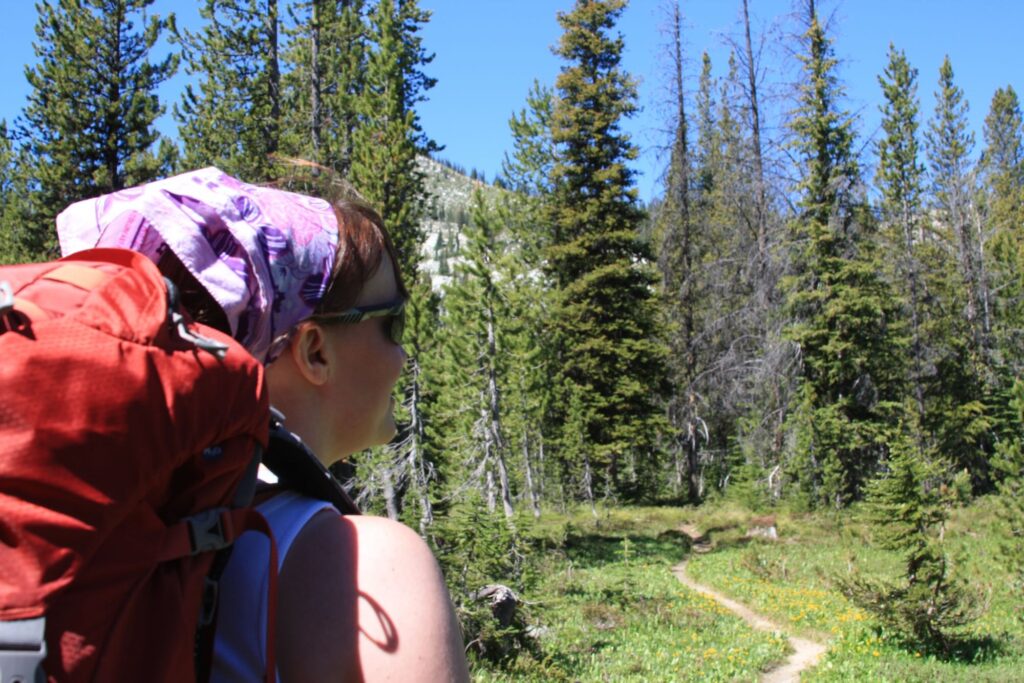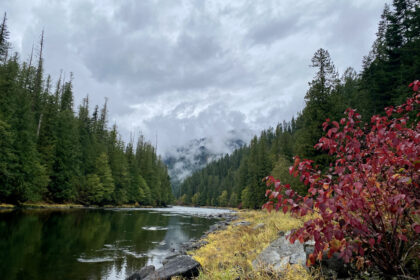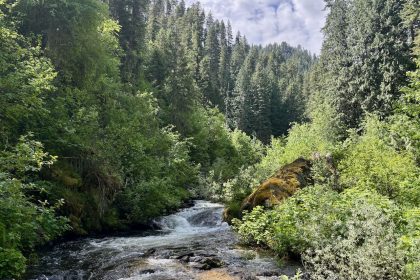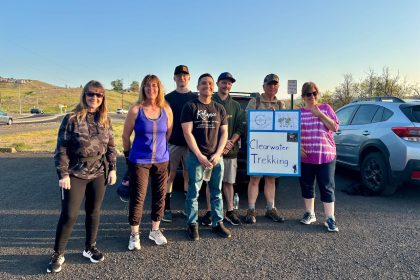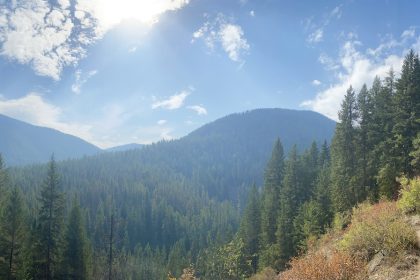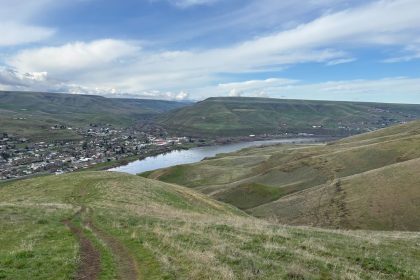When I first began as a wilderness therapy field guide, my pack was down-right full and heavy, but over time I was able to dial in my essential gear and really slim down my pack weight. I remember when one of my fellow guides saw me pull my pack out of the van upon arrival and jokingly asked if I’d gone ultralight on him!
We had the same kind of backpacks, and we were both normally very full with all our personal gear plus guide gear. But come Spring of my second season with Rites of Passage Wilderness Therapy, I’d probably cut my pack weight by a good 20% or more.
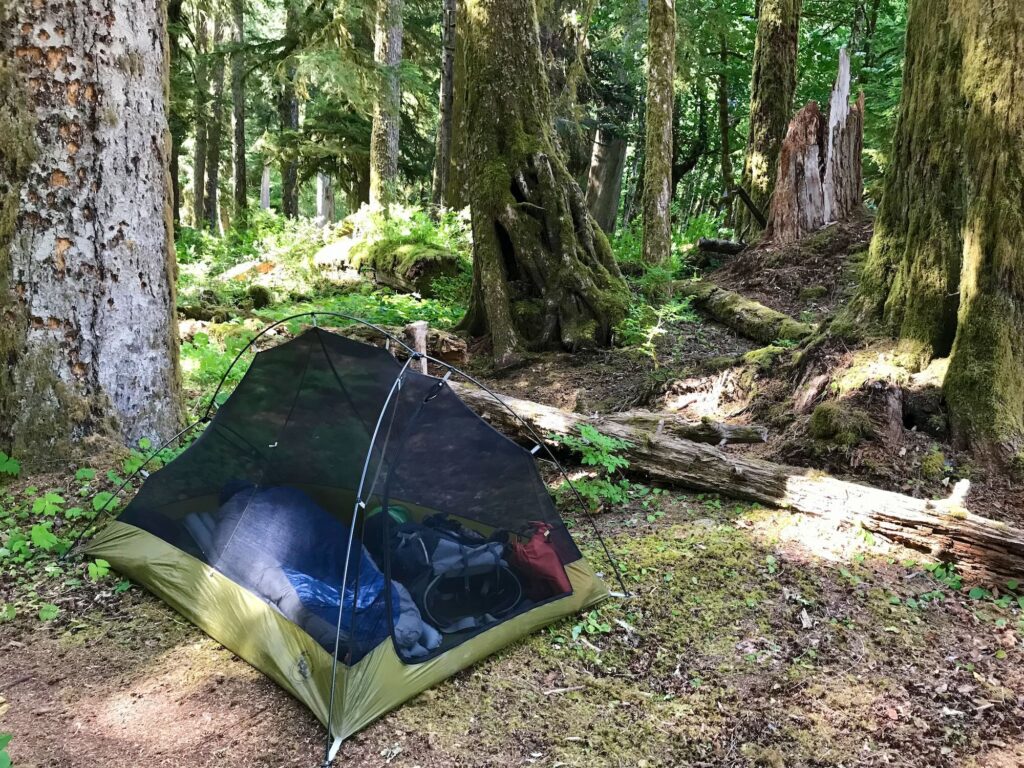
The key to downsizing my pack weight was the realization that how I spent one night in the woods was how I spent 14 nights in the woods. Everything else was just walking. Once I had a routine I could dial in my essential gear, cutting out what I didn’t need and minimizing what I did.
Pretty soon, I was starting to wonder how much weight I could save by carrying a smaller pack. And suddenly, I realized the allure of going ultralight!
The opportunity to evaluate various new backpacks came up recently while writing an article for an outdoor media company. What I noticed was that I could rate the packs by a weight to volume ratio and then divide the price by that ratio to determine the “unit” value of the pack. Yeah, I was geeking out on hiking backpacks, but go with me on this one for a minute.
Let’s take two of the most popular standard-sized backpacks right now, the Osprey Atmos 65 and the Gregory Paragon 68.
The Osprey Atmos 65 has an empty pack weight of 4.56 pounds and a volume of 65 liters. That gives it a weight to volume ratio of 14.25 v/w (Volume divided by Weight). That means that I get 14.25 liters of packing space per pound of empty pack weight. Seem legit?
The Gregory Paragon 68 weighs 3.71 pounds empty and has a volume of 65 liters. (That’s right. It’s called the Paragon 68 but it only carries 65 liters. Sneaky, sneaky.) That gives the Paragon a ratio of 17.52 v/w. That means I get 17.52 liters of packing space per empty pack pound. That’s quite a bit better than the Osprey.
Now check out the Granite Gear Crown2 60. This pack weighs in at a mere 2.36 pounds but boasts 60 liters of volume. That’s a ratio of 25.42 v/w! And this pack only costs $200. That’s only $7.86 per V/W! Think of it like a unit price for when you’re buying groceries.
Comparably, the Osprey Atmos costs $270, which is $18.95 per V/W. The Gregory Paragon costs $250, which is $14.27 per V/W. Somehow, seeing it like this gives me a baseline value, or unit value, for each of these packs.
Watch how this plays out as we start getting into lighter packs.
The REI Co-op Flash 55 weighs 2.62 pounds, has a volume of 55 liters, and costs $200. It scores a 21 v/w and costs $9.52 per V/W.
The Osprey Exos 58 weighs 2.65 pounds, has a volume of 58 liters, and costs $220. So it scores a 21.88 v/w and costs $10 per V/W.
The Gossamer Gorilla 40 weighs 1.9 pounds, has a volume of 40 liters, and costs $240. So it scores a 21 v/w and costs $11.43 per V/W.
These are all considered lightweight packs. Some of the companies use the term “ultralight,” but that term should really be reserved for these true ultralight packs.
The Hyperlight 3400 Junction weighs 2 pounds, has a volume of 55 liters, and costs $345. So it scores a 27.5 v/w and costs $12.54 per V/W. The extra cost really off-sets the value of the extra volume compared to the Gossamer Gorilla 40, doesn’t it?
So let’s try the Gossamer Mariposa 60. It weighs 1.9 pounds, has a volume of 60 liters, and costs $270. So it scores a 31.58 v/w and only costs $8.55per V/W! (Can you tell which pack might be my next one?)
One more because this one blows my mind. The Z-Pack Arc Blast 55L Backpack weighs a mere 1.25 pounds, has a volume of 55 liters, and costs $325. It scores a 44 v/w (what?!) and costs a measly $7.38 per V/W!! That even beats the Granite Gear Crown2 60.
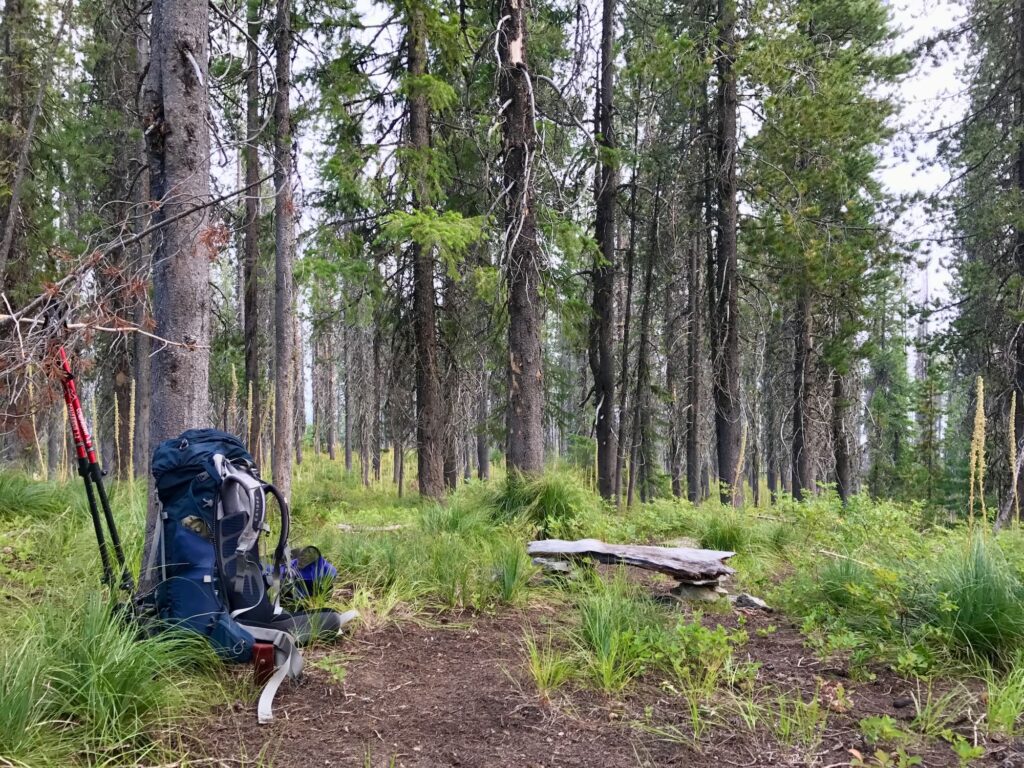
Ok, so that’s a lot of information and maybe you skimmed through all that, which is totally fine. The links are there if you want to check out the packs later. What this helps me do is compare the cost and value of each pack on a unit level. I’m not quite ready to take the ultralight plunge yet, my gear is still too heavy, but I can better see the intermediate steps I might want to take.
Each pack also has a load capacity to consider. The lighter the pack, the less weight it can carry, so until you’re outfitted with ultralight gear you may not want to go with a full ultralight pack. Plus, the ultralight backpacks tend not to last as long as the heavier packs do. The heavier ones are simply made with thicker, more durable material.
Ultimately, you want the pack that fits right while carrying only what you need. For me, that means the V/W ratio is my primary rating, and the overall sticker price simply has to fit my budget. So the Z-pack might be the best value, but it’s still at a high price range. I can save $55 by going with the Gossamer Mariposa 60 and get a more durable pack that carries more weight and has more volume.
Well, there you have it. That was me geeking out over hiking backpacks and dreaming of my next upgrade, even though my current Osprey Aether 65 is doing me just fine. Anyone else get this bug once in a while? What do you geek out over the most?
Thanks for reading my friends. I hope you found something helpful or entertaining here. Maybe both? See you on the trail!
#SeektheClearwater


